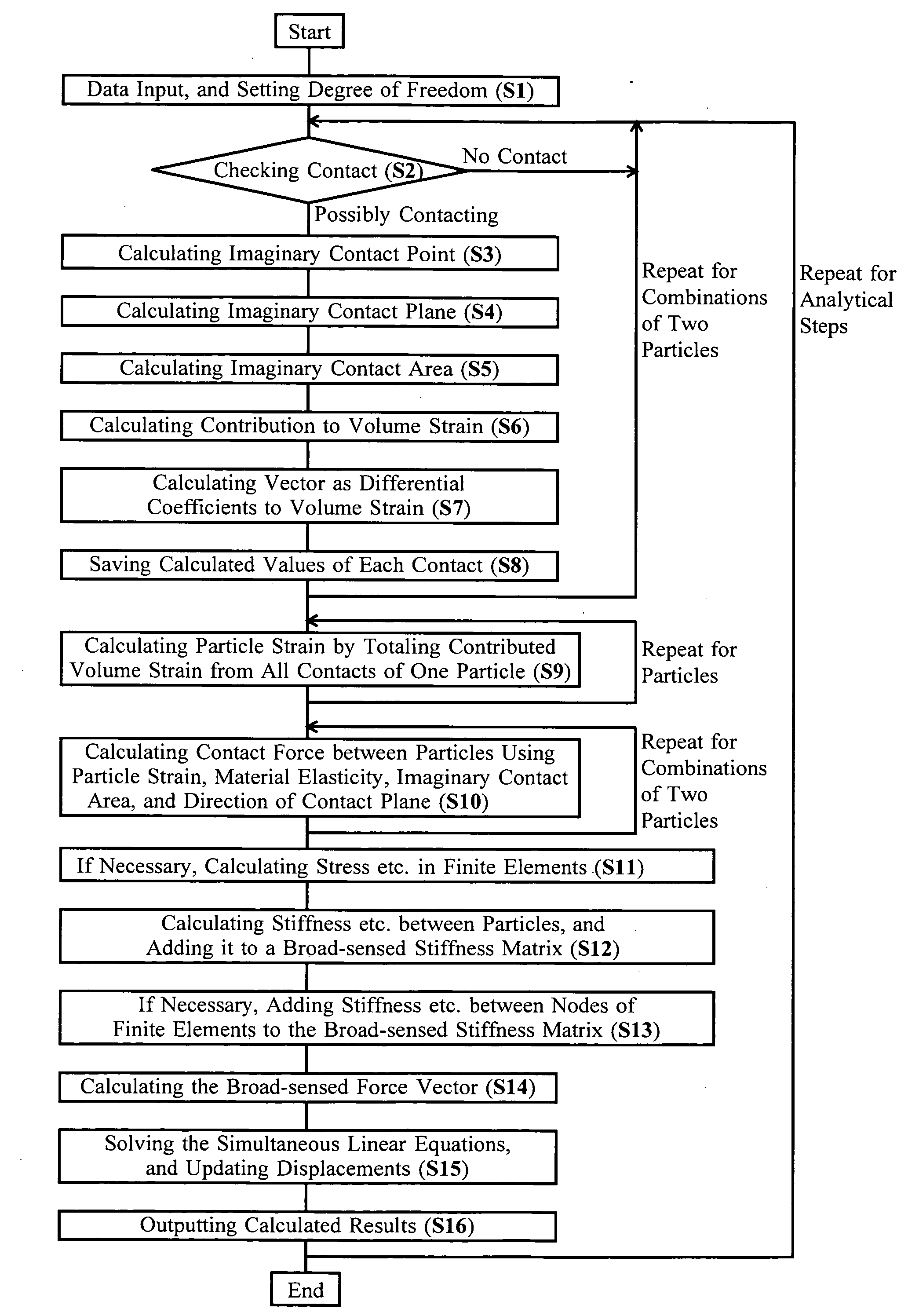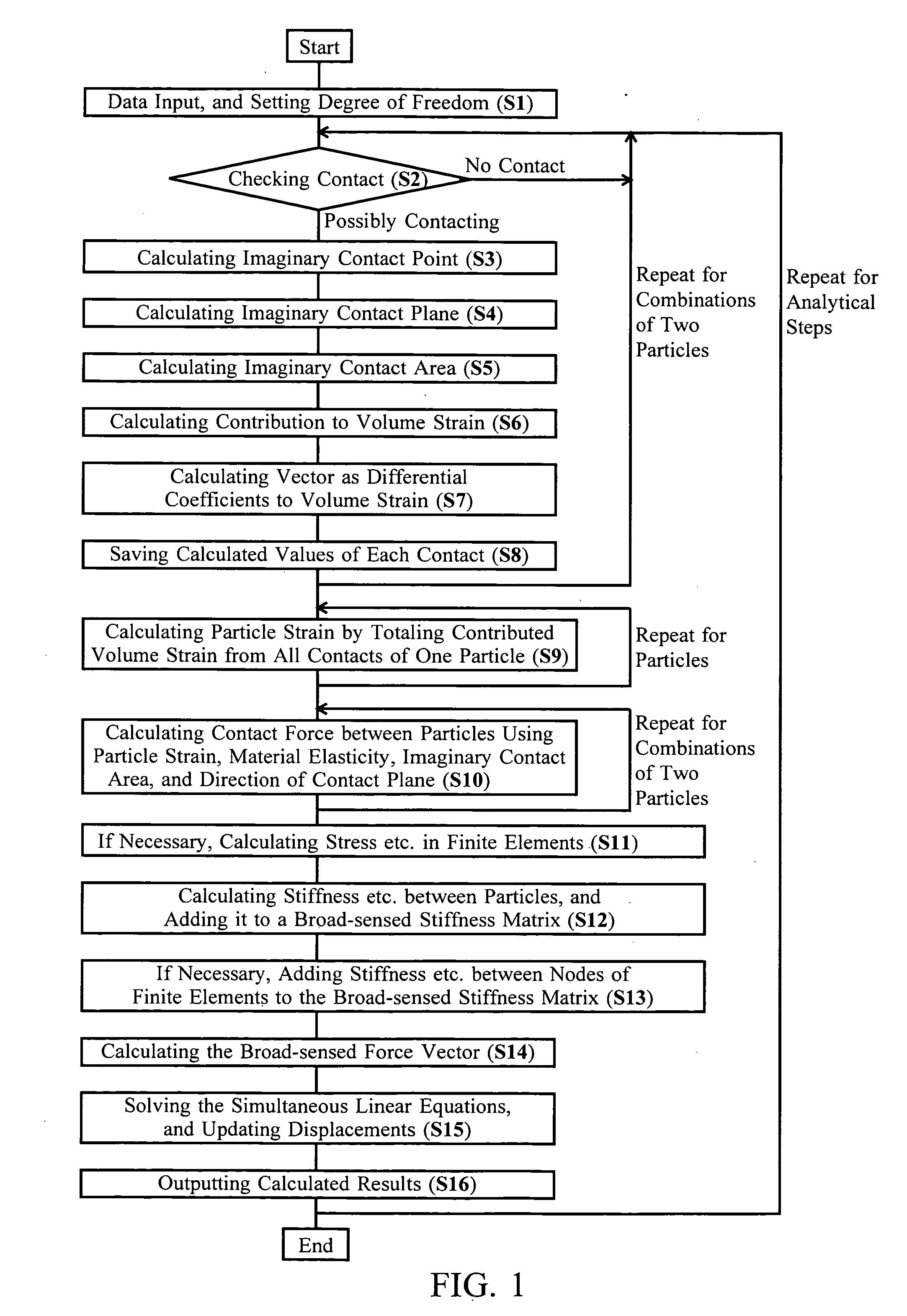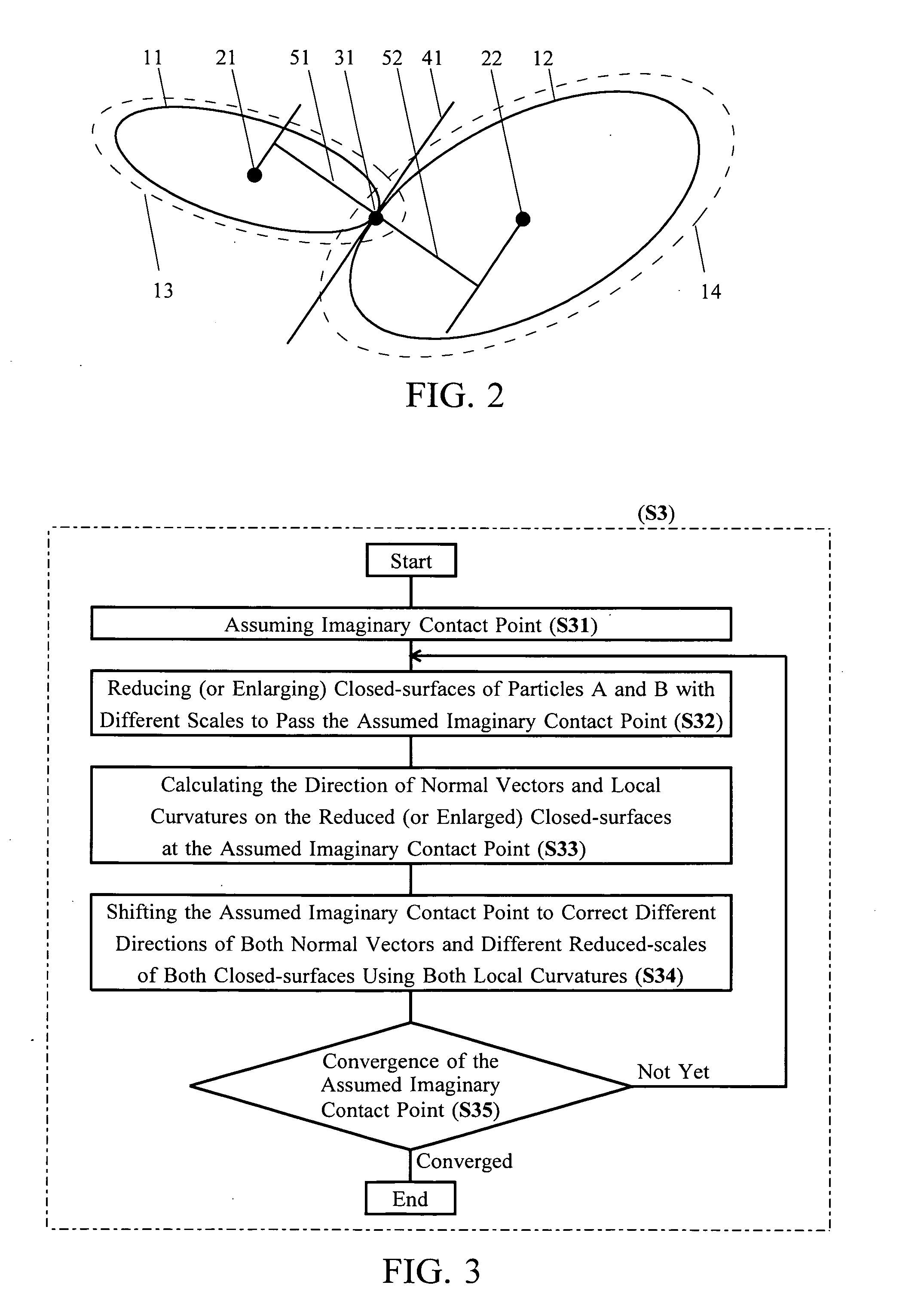Computer program using particle method
a particle method and computer program technology, applied in the field of computer program for particle methods, can solve the problems of difficult to take into account the complex modes of using, fundamentally unsuitable for a dispersed system, and limited particle shape in spheres or no shape, and achieve the effect of large deformation of each particl
- Summary
- Abstract
- Description
- Claims
- Application Information
AI Technical Summary
Benefits of technology
Problems solved by technology
Method used
Image
Examples
Embodiment Construction
[0023]The invention enables unlimited particle shapes not only to be a sphere in the particle method. First, the invention includes setting a mathematically-smooth (and usually closed) surface for each particle shape and size, and judging existence of contact between two particles as that between two mathematically-smooth surfaces. Contact of two mathematically-smooth surfaces will be basically limited at one point under a very high probability and simplifies the contact mode. Strictly, although two surfaces can contact rarely at two or more points, the usual contact at only one point is assumed for the invention. Moreover, the surfaces are usually closed surfaces; however some surfaces may be unclosed for modeling the boundary condition with particles, and may be closed inside out for analyzing internal contact to the surfaces.
[0024]Next, to calculate displacements of a non-sphere particle, it is required to determine a point of action of contact force between two particles. Theref...
PUM
 Login to View More
Login to View More Abstract
Description
Claims
Application Information
 Login to View More
Login to View More - R&D
- Intellectual Property
- Life Sciences
- Materials
- Tech Scout
- Unparalleled Data Quality
- Higher Quality Content
- 60% Fewer Hallucinations
Browse by: Latest US Patents, China's latest patents, Technical Efficacy Thesaurus, Application Domain, Technology Topic, Popular Technical Reports.
© 2025 PatSnap. All rights reserved.Legal|Privacy policy|Modern Slavery Act Transparency Statement|Sitemap|About US| Contact US: help@patsnap.com



